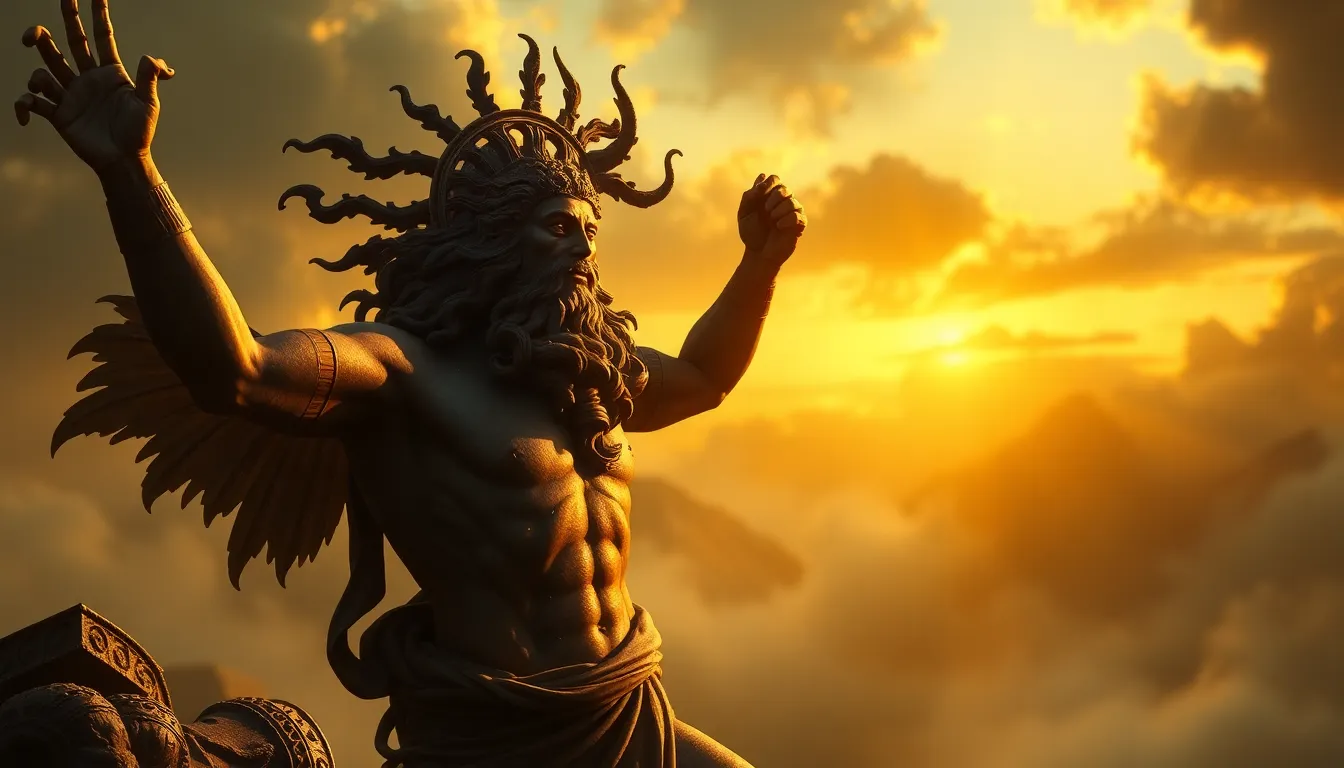The Duality of Dionysus: Life, Death, and the Pursuit of Immortality
I. Introduction
Dionysus, the Greek god of wine, festivity, and ecstasy, occupies a unique position in the pantheon of Greek mythology. Often seen as a symbol of duality, Dionysus embodies the complex interplay between life and death, joy and madness, freedom and chaos. This article aims to explore the multifaceted nature of Dionysus, delving into the themes of life, death, and the human pursuit of immortality as illustrated through his myths and worship.
II. The Nature of Dionysus: God of Wine and Ecstasy
Dionysus, also known as Bacchus in Roman mythology, has origins that are shrouded in mystery. He is often depicted as a youthful, effeminate figure, crowned with ivy and holding a thyrsus, a staff entwined with vines. His attributes include:
- God of wine, representing both the intoxicating and enlightening effects of the vine.
- Deity of fertility, growth, and the harvest, linking him to the earth’s abundance.
- Patron of the arts, particularly theater and music, emphasizing creativity and emotional expression.
Dionysus embodies pleasure, revelry, and liberation from societal constraints. His festivals, particularly the Dionysia, celebrated theater and wine, allowing participants to experience ecstatic states of being that transcended the ordinary.
III. The Dark Side of Dionysus: Destruction and Madness
While Dionysus is often celebrated for his joyful aspects, he also possesses a darker side that can lead to destruction and madness. Several myths illustrate this duality:
- The Bacchae: In this tragic tale, Dionysus drives the women of Thebes, including King Pentheus’s mother, into a frenzy, resulting in chaos and bloodshed.
- Lycurgus: The king of Thrace, who opposed Dionysus, faced dire consequences for his rejection of the god, ultimately leading to his madness and death.
- Orpheus and Eurydice: Orpheus’s descent into the underworld to retrieve his wife Eurydice highlights the peril of ignoring the boundaries set by death and the divine.
This balance between ecstasy and chaos serves as a reminder of the potential consequences of indulging in Dionysian pleasures without respect for limits. Ignoring these boundaries can lead to personal and societal destruction.
IV. Life and Death: The Cyclical Nature of Existence
Dionysus symbolizes the cyclical nature of life and death, reflecting the agricultural cycles that govern human existence. His myths often illustrate themes of rebirth and renewal:
- Seasonal Change: Dionysus’s death and resurrection each year symbolize the death of winter and the rebirth of spring, mirroring agricultural cycles.
- Myths of Transformation: The stories of Dionysus often include themes of transformation and rebirth, such as his own transformation from a mortal to a god.
- Celebration of Life: His festivals emphasize the joy of life and the inevitability of death, inviting participants to embrace both aspects.
Through these narratives, Dionysus encourages acceptance of life’s transient nature and the understanding that death is a necessary part of existence.
V. The Pursuit of Immortality: The Human Connection
The rituals associated with Dionysus often emphasized the connection between ecstatic experiences and the afterlife. These rituals included:
- Wine-drinking ceremonies that celebrated the divine and connected participants to the spiritual realm.
- Rituals of ecstasy involving music, dance, and communal experiences designed to transcend the mundane.
- Festivals that allowed individuals to confront their mortality through the celebration of life, death, and rebirth.
Through these ecstatic experiences, followers sought a form of immortality, believing that by connecting with Dionysus, they could momentarily escape the confines of mortality. The implications of these rituals extend into the human search for meaning, emphasizing the desire for lasting significance beyond physical existence.
VI. Cultural Interpretations and Artistic Representations
Dionysus has been a prominent figure in ancient Greek art and literature. His depiction can be found in various forms:
- Sculpture: Statues often portray him in a youthful form, surrounded by vines and animals, symbolizing nature’s bounty.
- Literature: Playwrights like Euripides explored his character in works such as “The Bacchae,” examining themes of power, madness, and divine influence.
- Modern Interpretations: Contemporary artists and writers continue to draw inspiration from Dionysian themes, exploring the balance between chaos and order in human experience.
The enduring legacy of Dionysus in art reflects the complexity of his character and the themes of duality that resonate through time.
VII. Psychological and Philosophical Perspectives on Duality
The duality of Dionysus also finds relevance in psychological and philosophical discourse. Key perspectives include:
- Psychological Duality: Carl Jung’s theories of the shadow self and archetypes highlight the necessity of embracing both the light and dark aspects of human nature, akin to Dionysian themes.
- Philosophical Implications: The interplay of chaos and order reflects existential questions about the nature of existence and the human experience of life and death.
- Contemporary Relevance: Dionysian themes resonate in modern existential thought, encouraging individuals to confront the duality of their own lives and the search for authenticity.
This exploration of duality not only enhances understanding of Dionysus but also provides insights into the human condition and the complexities of existence.
VIII. Conclusion
In conclusion, the duality of Dionysus encapsulates the intricate relationship between life, death, and the pursuit of immortality. His myths and teachings resonate deeply with the human experience, inviting us to embrace the full spectrum of existence. As we reflect on the relevance of Dionysian themes, we are reminded of the importance of accepting life’s cyclical nature and seeking meaning in both our joys and sorrows. The legacy of Dionysus encourages us to celebrate life while acknowledging the inevitability of death, ultimately guiding us in our quest for understanding and fulfillment.




